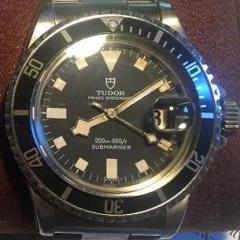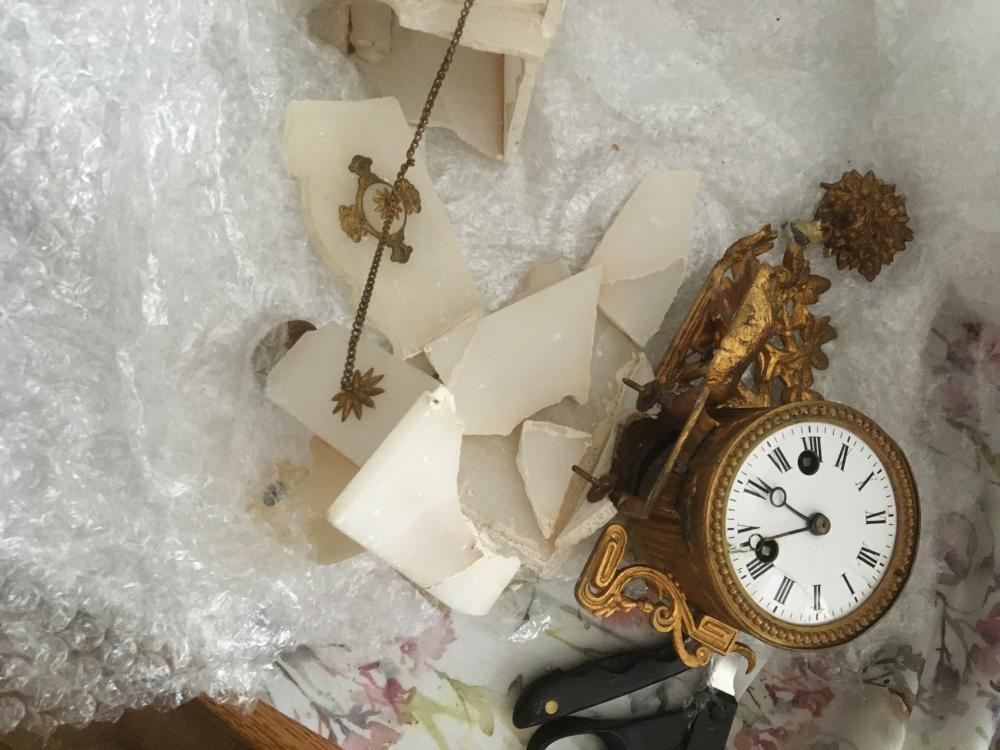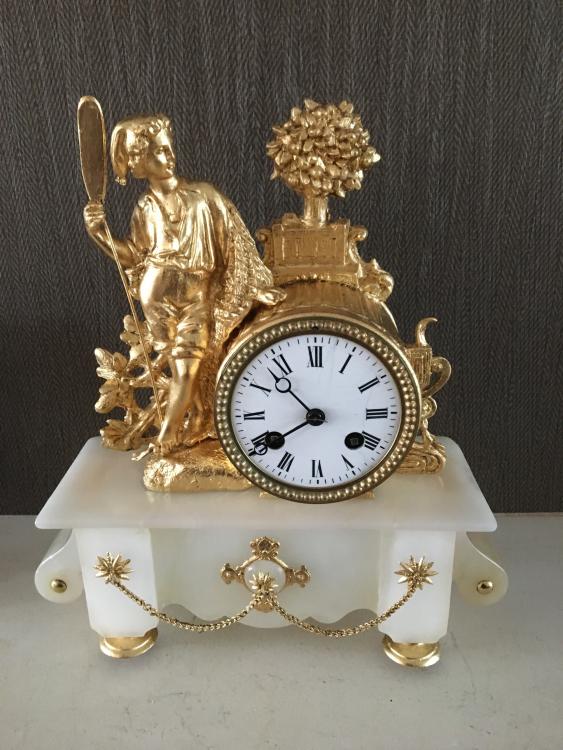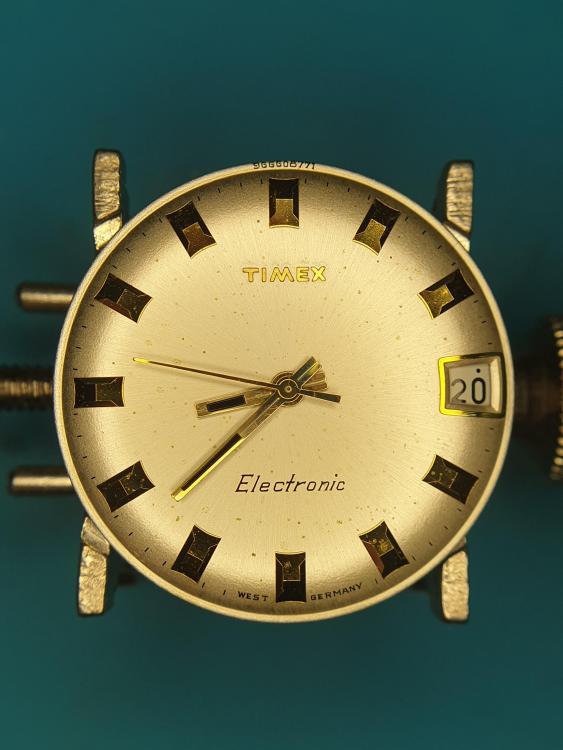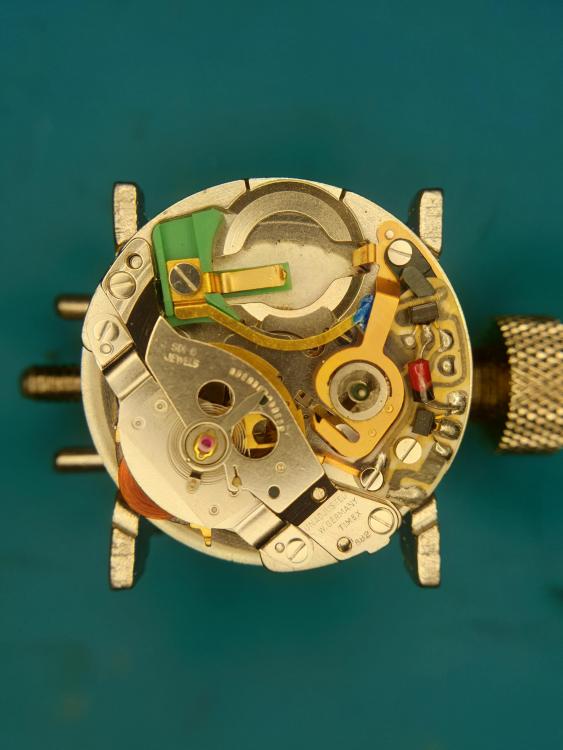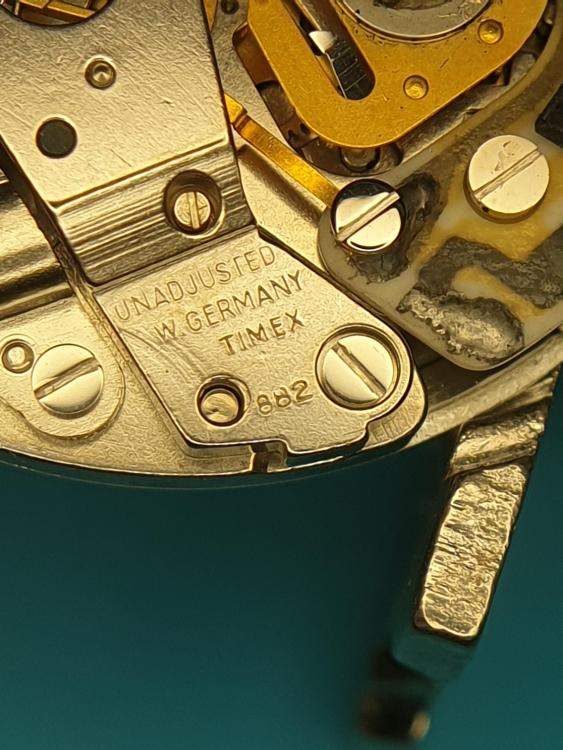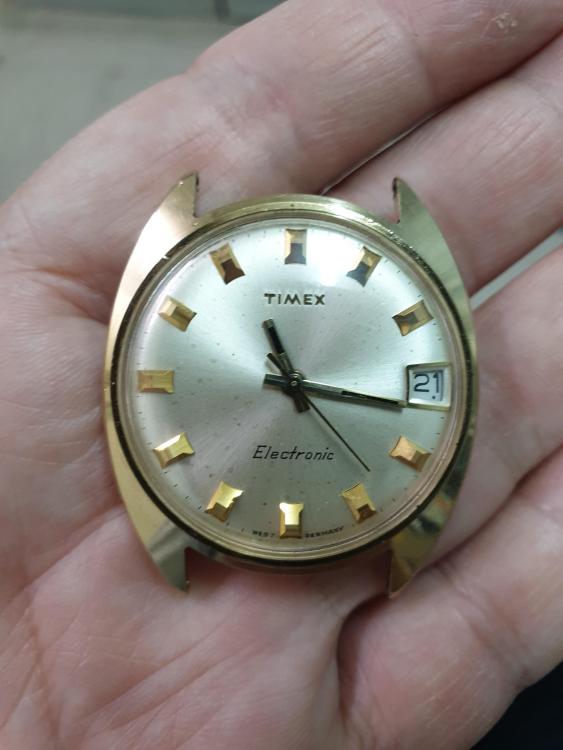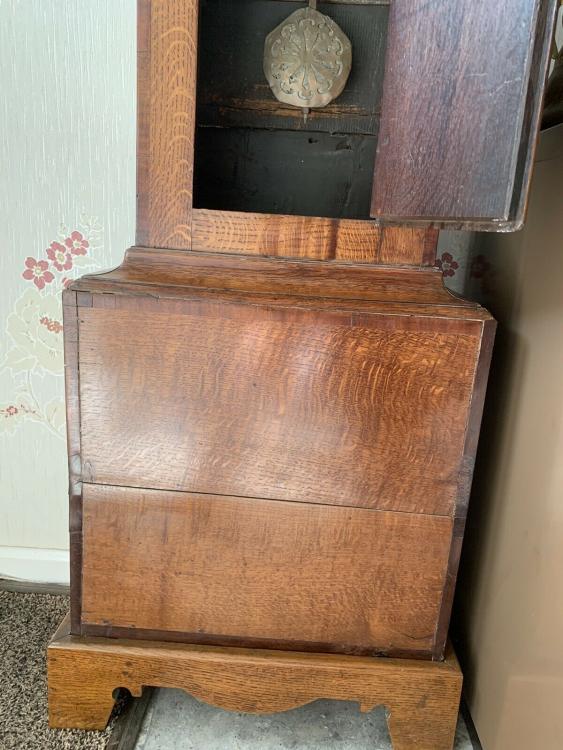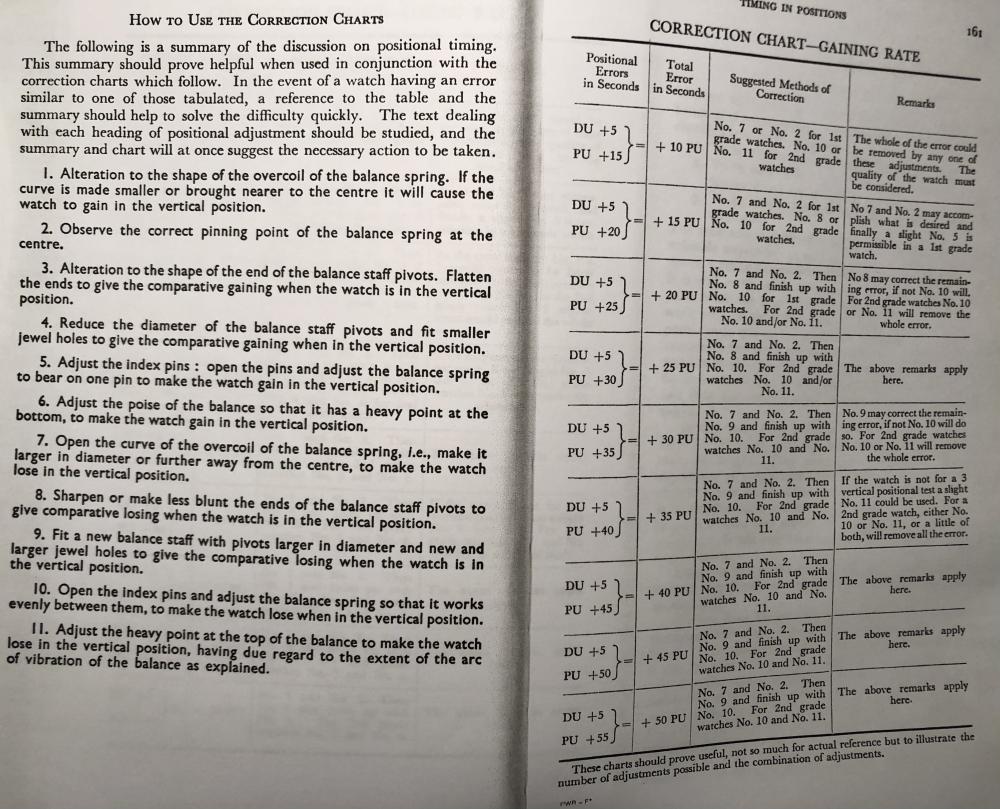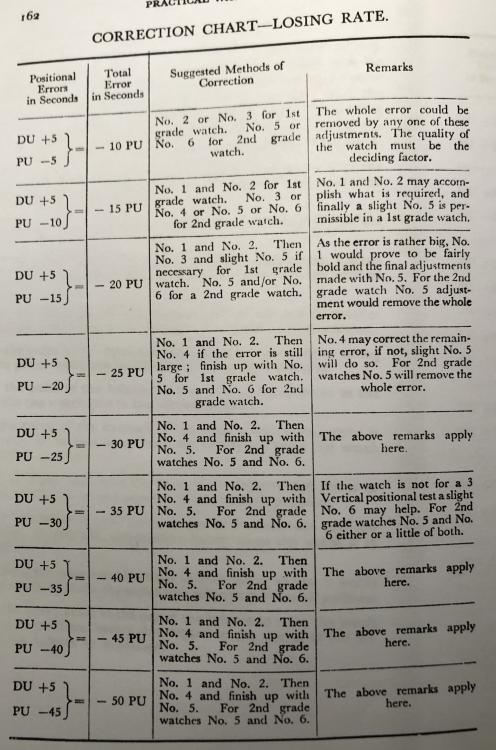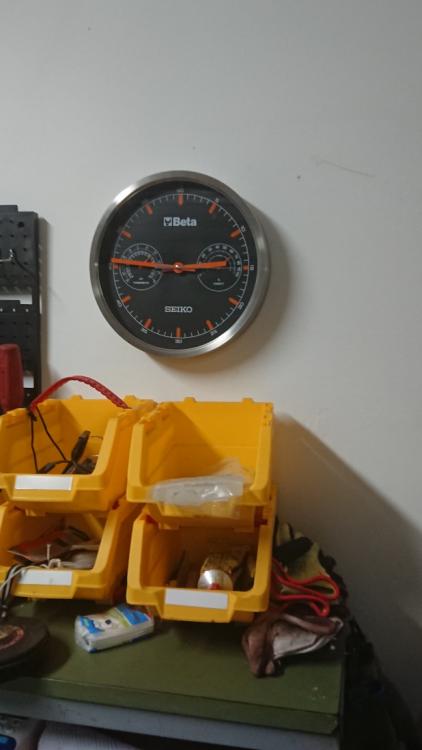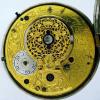Leaderboard
Popular Content
Showing content with the highest reputation on 12/02/20 in all areas
-
You want a hardenable steel, preferably (strongly) in its annealed state. As close to final thickness as possible, as it's a long boring process to work it down. Stick the old part on your blank metal. In school we used soft solder, but you can use superglue or whatever is handy. If you have the broken bit stick it in place as close as you can to its proper position. If you don't have it, you can approximate it from the Bestfit drawing. Now you can drill through the holes in the original part, and saw and file around the perimeter of the old part. One way we were shown was using a Dremel type cutoff wheel held in the lathe, with a slotted table in the T rest, and you grind away the blank. I never liked that as the wheel wears and the grinding dust and precision lathe bearings is a bad mix. It goes quite fast with a jeweler saw and file. If you can only find pre-hardened steel, like feeler gage or old clock mainspring (yes it's a fine material), it would be best to anneal it first. Heat it to a dull red and let it cool as slowly as possible. If using clock spring now you can redress it pretty flat, finishing on various grits of abrasive paper to get it uniform. Don't get nervous about making the spring arm too fine, if it's too thick it will be hard to pull into setting position and it could lead to premature wear on the detent and stem slot. Make it as close to original as possible. To reharden (or harden), heat to an orange color and quench in oil. Even if it's a mystery steel this will 99.9% of the time work fine for small pieces like this. I like to hold the part in a steel tube, I use old canisters from seltzer or whipped cream siphons (they are about 20mm diameter, cut the neck off, perfect for watch parts). If you want to get fancy fill the tube with wood charcoal powder before heating to orange, and the part will come out of the oil a nice grey color. If you don't use the tube then it's good to make a little basket out of iron wire to heat the part in; this helps ensure the heating is even all around. If it's dark in color after quenching, brighten it on fine abrasive paper, then heat in a little pan of brass filings over an alcohol lamp until it turns a nice blue color. Now you can finish it, a grained surface off of abrasive paper it nice, and use a toothpic in a hand motor and some polishing paste to finish the notches that work with the pin on the detent. This can also remove the blue from the sides and in the holes. Ah- if there are countersunk holes for the screw/s, do this (with and appropriate drill, hand held in a pinvice) before hardening.4 points
-
I have spent many, many hours in my workshop restoring this clock after it arrived totally wrecked (see pic). There are still issues that need resolving. 1. the minute hand Is not correct and is just a modified hand that came with the clock and as yet I have still not found a replacement that fits. 2. The chiming sequence goes out of sequence now and again. The issue might be when in the strike mode it runs very, very fast so it might be skipping the count wheel, maybe !!!.. or The fly wheel bushings might need replacing!!! However lessons learnt. When sticking alabaster together use epoxy glue BUT mix it with some alabaster powder. This hides the joins (almost) When replacing the pendulum the numbers found on the rear of the case are really useful. This particular clock has 4.8 and using the PDF (see attachment) it gave me the length required and also the BPM expected. Using the Clock master app on my iPhone it was almost spot on with regard to timekeeping. If careful spelter can be drilled and have a thread tapped into it. When gold leafing use fresh size and after applying leave for at least 15 mins before attaching the leaf. To get a smooth finish I found my finger gave the best results. BEFORE AFTER FrenchClockBeatRates2.pdf.pdf.pdf2 points
-
2 points
-
This was sitting in my junk pile for some time. I was looking for a spare contact wire for one of my Timex Electrics, and I remembered that the Timex Electronic has a contact wire. But when I opened it up, it was a totally different beast inside. The movement number on the dial plate is 882, which I checked up is a M87. The balance appeared fine. So I put a battery in to see if it would fire up. And it does! After cleaning it up, it doesn't look half bad. And now I have to continue searching for a contact wire....1 point
-
I recently attempted to change a dial and hands on a watch I purchased with a selitta sw200 movement. I made a rookie mistake and pulled the crown out in the winding position. Of course this messed everything up and I had to research how to correct my mistake. I've read several posts and watched videos on the keyless works and thought I would give it a shot. My first several attempts weren't successful and resulted in the same problem. I took a break and gave it one last shot as I thought I forgot to make sure the stop lever was resting in the groove of the sliding pinion. After getting it back together it now works except it won't wind, the crown turns with no resistance. I don't know if I stripped some teeth accidentally when trying to repair it or if I neglected to do something during reassembly. It winds fine with the rotor, runs and sets the time and date correctly. I will have to take it apart sometime as when disassembling I saw the screw head for the setting lever spring was only half there. I am able to remove it and screw it back in but want to get another to replace it if I need to take it apart again. Does anyone have any ideas as to what went wrong.1 point
-
Glad to help. I myself was looking for a single screw 2709 for Omega. Nothing cheaper than $30USD plus another $20 in shipping cost... Not happy! ?1 point
-
Appears to be the same part. Sellita SW200-1 Part No. 5445, Screw Our Price: £0.50 –+ SKU: LWP.SW200-1.5445 https://www.leosics.co.uk/sellita-sw200-1-part-no-5445-screw.html1 point
-
1 point
-
SMART! I have learned very quickly - in some cases you better stop before it's too late ?1 point
-
St. Lucia Racer oil #188 (It's the rarest snake on earth!) Product of USA - 15ml There are two other weights available (I have not bothered to stock them yet) #163 (light) and #220 (heavy). The #188 is "medium" weight and ideal for turntable bearings and tape deck capstain bushings etc. I get four bucks for the oil and USPS gets eight n change for the shipping...1 point
-
I usually push the jewel in with peg wood , until it hits the lip and make sure it is level. Then I install the cap and at times I use a hollow stake or Jeweling set. The reason for not using the peg wood for the cap is that it is domed and you could damage that jewel in the setting. I have however done both with peg wood, if the cap jewel setting is fairly loose in the hole and can easily be pushed in. Befor you remove it, make or note a small witness mark si you can put it back into the exact same place.1 point
-
Hi everyone, there's some great deconstruction and information e books to download free on the naked watchmaker website have a gander. https://www.thenakedwatchmaker.com/independent-watchmakers1 point
-
Spotted this on ebay. You can see how the bottom is not the original it has been replaced. It’s not the same colour its lighter, if anything it should be darker being at the bottom it would be prone to dirt and damp and even chipped. This is just a little bit of advice on what to look for if you are thinking of buying a Longcase clock.1 point
-
I'm attaching pictures so you can see what the other tool looks like. There are two protruding needles which actually look like sewing needles ground on one side. what we can't see is how their attached to the base. Because they're both free to rotate a little bit and move around which is the key. As you can see it goes under the wheel flat side up. Then you just rotate the handle a little bit each the needles rotates and lifts the wheel up works really well.1 point
-
Thanks. This is not something new. When you received your watch, was it showing 03:28 time? ? Which model of Geiger counter have you purchased? And, did you have a chance to watch this video ?1 point
-
1 point
-
You should be able to push the jewel and it’s cap out by pushing from the lower side of the jewel with a flattened piece of peg wood. You need to align the jewel with a hole on your metal block and simply push down with the balance cock laying upside down on the metal block. I have actually used a stake in the past. Need to make sure that the peg wood stick or the stake pushes on the jewel setting and not the jewel. Also check that he fine edge that holds the jewel in is below the jewel and you can in fade push it out.1 point
-
Then if it's also resistant to human caused damage, that would make it the greatest thing ever!1 point
-
I am putting a box of sand under my desk so I can take off my shoes and wiggle my toes like I'm at the beach.1 point
-
I would say, if you could get a silicon hairspring, as Omega uses (and I think Oris is using in their latest caliber), you would be hard pressed to improve upon that. Completely impervious to both magnetic influence and temperature influence (until around absolute zero, where you have other issues). I honestly think that detail is/was a bigger deal than the co-axial escapement, personally.1 point
-
Beta is a bespoken Italian tools brand. Got this from their shop but I couldn't stand the wobbling seconds hand and noise. So I got a Seiko sweep seconds mov.t which legitimated the label where it said quartz before. Also replaced the glass with a thicker one. Thermometer is far from accurate but one can't get everything in life ?1 point
-
A quote from a book I have here: “modern lighter fuel is contaminated with a small amount of oil, making lighter fuel a very poor degreaser. Very small particles of oil will be left on any part that you try and clean when using this substance.”1 point
-
I personally wouldn't lose any sleep over owning or wearing your watch. I would be very careful if I decided to re-lume the hands. Have a read through some of these threads and make up your own mind. http://www.watchrepairtalk.com/search/?type=all&q=Radium1 point
-
Hello Omar, Welcome from me in the cold, wet, North East of England as well Cheers, Vic1 point
-
Absolutely in my area too Omar, almost neighbors, only 12 hrs driving! @CKelly I don't know about you Charles, for all I know you may be about 15.5 hrs away, probably too far.1 point
-
Hi Omar, It's good to hear from someone in my area. I'm only about three and a half hours away driving on I-40. Charles K1 point
-
1 point
-
1 point
-
1 point
-
I tried putting it out in the sun and then later on under the lamp in the night. Still won't buzz. Took out the battery and replaced it just to be double sure but stil won't move. Will need to find someone who can handle it ? @Graziano0 points



